It's time for Christmas preparations. Maybe you have already Christmas presents ready, you have made plans for the festive menu, you have already created a to-do list to don't forget what you still need to secure or check.
For example, whether you have a Nativity scene - artistic rendering of the story of the birth of Jesus Christ. Of course, main characters there are The Holy Family: St. Mary with St. Joseph and the Child Jesus.
Child Jesus
The main figure of the Nativity scene is child Jesus. A child lying in the stable in the manger, that was used to feed cattle. A child who has many names: Jesus, Christ, the Nazarene, the Son of God, the Messiah or the Saviour. It symbolizes an almighty God who has become a defenceless and poor human. His name is extremely important - Jesus: translated from Hebrew as "God is salvation". This little child carries on his shoulders the heavy burden of misery of all mankind and is to become the long-awaited Saviour.
Virgin Mary
The figure of the young mother Mary embodies virgin innocence, purity and immaculate. It is located next to the manger in the kneeling or sitting position. It is remarkable that Maria almost always wears a blue cover. The colourful symbolism of Christian art can be found in both the Old and New Testaments. Blue is considered a celestial colour there and means faith and loyalty. But the blue is also associated with the sea with unlimited distance and depth. The colour blue therefore connects the heavenly with the terrestrial.
St. Joseph
Joseph is depicted as an advanced man to emphasize Mary's virginity. He stands up right next to or behind his family, either holding a glowing lantern or leaning lightly on a club. This is how it symbolizes the protector of Holy family. Joseph is also considered the "guardian of light" that illuminates the world through the birth of Jesus.
However, other figures are inseparable from the Nativity scene, and we do not think humans at all now. Animals, especially donkey and ox, also belong to the proper Nativity scene. But how did they even get there? And what is the significance presence of other animals which we find there?
An integral part of the Nativity scene.
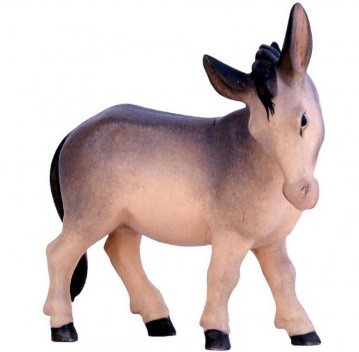
When did donkey and ox appears on the Nativity scene? It may come as a surprise, but they have been part of the image of Jesus' birth since early Christianity. In addition to carved Nativity scenes, they have also appeared on frescoes or in glass windows of churches since the 4th century - in fact, as soon as Christians could begin building their churches after the persecution of the Roman Empire. However, we do not find any mention of the animal witnesses of Jesus' birth in the Gospel. The evangelists Luke and Matthew, who tell us the Christmas story, do not mention any animals.
What is the significance of the ox and the donkey in Nativity scene?
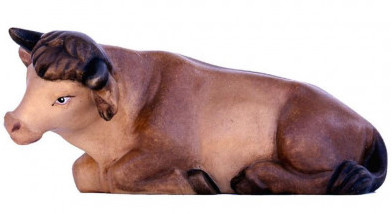
Some historians believe that the presence of the ox and the donkey in the Nativity scene is a reference to Old Testament. The Book of the Prophet Isaiah contains the following words: “The ox shall know his owner, and the ass of his master's manger; Israel knows nothing, my people have no reason” (Book of the prophet Isaiah, chapter 1, verses 2-3). This sentence means: The animals know their master, but the Israelites cannot know their Lord and turn away from him.
The ox and the donkey were indispensable helpers in the field. The shepherds and the three kings became part of the nativity scene only later. This interpretation is also supported by the depiction on the sarcophagus of the city gate in the church of St. Ambrose in Milan built around 380. Child Jesus lies here completely alone, even without Mary and Joseph - but next to the ox and donkey! According to the Christian understanding, the donkey at the manger represents the Pagans, the ox the Jews.
What other animals can we find in the Nativity scene?
In addition to the donkey and the ox, we often find other animals in the Nativity scene: such as sheep and lambs, dogs, but also camels, elephants and horses. Do they have any meaning?
Sheep and lambs
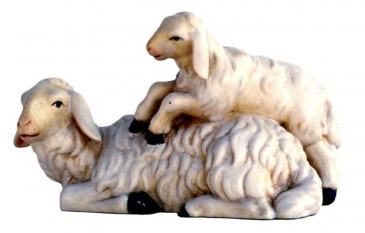
Sheep are animals often mentioned in the Bible. They were not considered as stupid, but useful animals. There are numerous mentions of sheep or lambs in both the Old and the New Testament. While the Old Testament speaks of a sacrificial lamb, the sheep in the New Testament symbolize the man whom Jesus, the Good Shepherd, brings back to the right path. According to the Gospel of Luke, shepherds who grazed their flocks around Bethlehem came to the manger and became witnesses the birth of Jesus. Luke writes: “There were shepherds in that region, who watched and kept their flocks at night. An angel of the Lord came to them, and the glory of the Lord shone on them” (Lk 2: 8-9). So, they were shepherds who were the first to hear the gospel of the birth of Jesus through an angel. Sheep simply belong to the figure of a shepherd, and that is why we find them in our Nativity scenes as well. They help us to tell the Christmas story.
Dogs
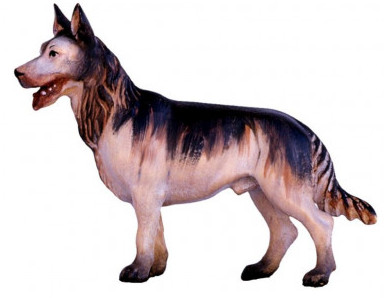
In many cases, a dog joins the crowd of animals at the Nativity scene. It also necessarily belongs to the figure of the shepherd; it protects the herd and the shepherd himself. It symbolizes vigilance and protection. There are many other animal figures at the Nativity scenes. It shows the whole of God's creation is taken into account at Christmas, not only the human but also the animal world.
Camel, elephant and horse
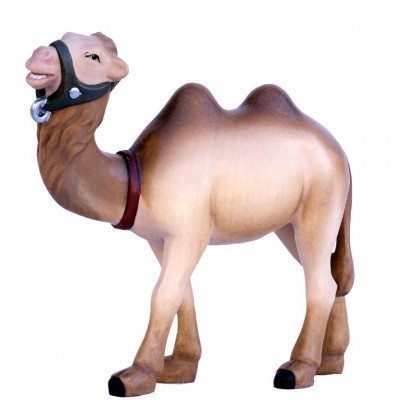
When talking about the birth of Jesus, the evangelist Matthew again mentions the obeisance of the three wise men from the East. Therefore, exotic animals also enrich the Nativity scene. In addition to ox and donkey, sheep and shepherd dog, you can see exotic animals in some Nativity scenes, such as elephant, camel or horse.
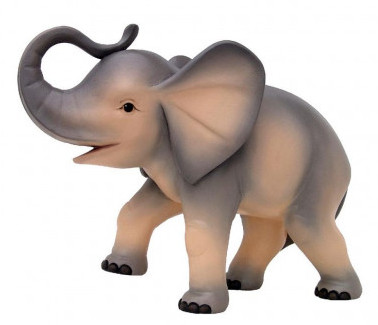
They belong to just three wise men - the kings from the East. Like their riders, they represent the continents of those times. The elephant is located next to king Gaspar and represents the African continent. Balthazar is depicted on a camel and is a representative of Asia. And Melichar rides a horse as representative of Europe.
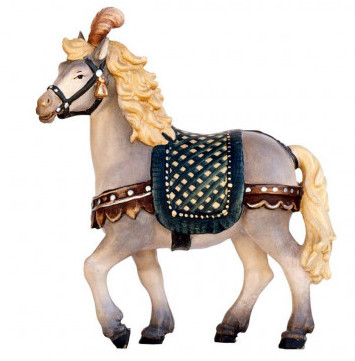
The Nativity scenes figures leave a lot of room for interpretation. This also applies to the animals in the manger, which are an essential part of the Christmas story. Feel free to browse our large selection of handmade Nativity scene figures and entire Nativity scene sets in our online store:
Photo and text: Choralis Wood Art

























